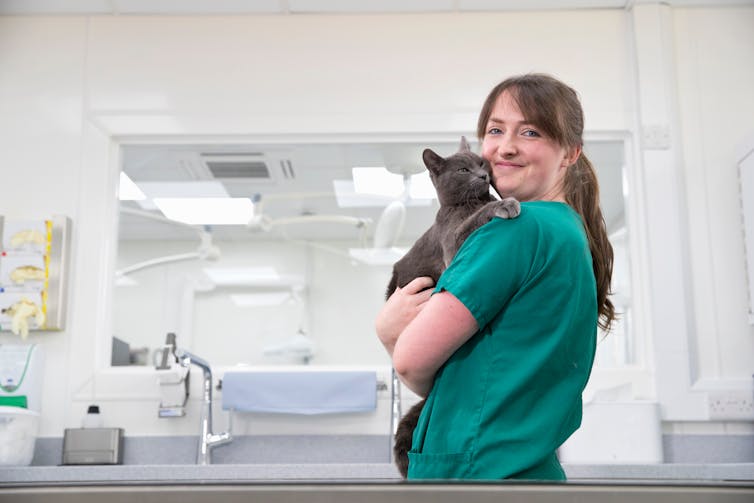Source: – By Luca Bussotti, Professor at the PhD Course in Peace, Democracy, Social Movements and Human Development, Universidade Técnica de Moçambique (UDM)
Mozambique’s government, led by the Frelimo party, has long been planning celebrations for 2025. It is 50 years since independence, won after an anti-colonial war against Portugal led by the same party.
Something has gone wrong, however, especially in the past two years.
Since the country’s popular rapper Azagaia died in March 2023 and peaceful processions in his memory escalated into violent clashes with the police, space has opened up for the establishment of a social movement of young people. This has since turned into a political movement, taking on the name “Povo no Poder” (“People in Power”). At its head is a brilliant politician, Venâncio Mondlane.
Povo no Poder was also the name of Azagaia’s hit song, which had been the soundtrack to 2008 protests against rising energy costs.
The demonstrations in March 2023 marked a turning point for Mozambique. It was as if all the energy and indignation about a highly corrupt and increasingly authoritarian country that Azagaia had expressed through his songs had been passed on to previously fearful young people. Now they dared to challenge the police and army in the open and without any weapons.
In late 2024 Mozambicans took to the streets to protest against elections they claimed were rigged. Over 300 people were killed in demonstrations.
Efforts have been made to redress this serious wound. In preparation for the 50 years of independence Frelimo has been recalling key places and symbols in the liberation war, harking back to a time when they represented justice.
But attempts to evoke past glory and ideals are not resonating with ordinary Mozambicans. The mood in the country is subdued.
As a specialist in the politics of lusophone Africa, in particular Mozambique, based on years of research, I find it difficult to envision a future of peace and prosperity for the next 50 years. There are divisive elements at play across the country. The post-election crisis has its roots in widespread discontent. Mozambicans are also rising against the cost of living crisis.
Attempts to rekindle the flame
The newly elected president, Daniel Chapo, opened the 50th anniversary celebrations on 7 April in Nangade, in Cabo Delgado province. This is one of the places where the armed struggle against the Portuguese began.
National symbolism has focused on the torch of national unity, travelling the length and breadth of Mozambique to arrive in Maputo at the historic Machava Stadium on 25 June, Independence Day, for a concluding public ceremony.
Not everyone has shared this attempt to patch up a country torn both politically and socio-economically.
Too much has been lost in the intervening decades.
In the initial period of independence Frelimo adopted socialist policies and attempted to promote free and universal social services, primarily healthcare and education. Back then, the ruling class, starting with the country’s first president, Samora Machel, didn’t enjoy any particular economic privileges.
The reality today is quite different.
Journalist and social activist Tomás Vieira Mário, one of the main critics of the current regime, has traced the stages of independent Mozambique’s history. He’s pointed out the contradiction between the initial thrust by many Mozambican common people towards the liberation movement and subsequent, authoritarian developments.
He concluded in an article that all that remained to unite Mozambicans was the
mere sharing of the same territorial space. And a lot of blood.
He was referring to the long war against Renamo from 1976 to 1992 and again from 2013 to 2019, ethnic questions that have never been resolved, and finally the armed attacks in Cabo Delgado of jihadist and ethnic nature.
For his part, renowned philosopher Severino Ngoenha has also underscored the importance of a justice system that is fair and inclusive, and not at the service of one political party.
The new opposition is coming not from Renamo or Frelimo but from the streets. Popular protests have taken place this year even in areas once considered Frelimo strongholds. In Gaza province, southern Mozambique, for example, there have been outbreaks of violence, demonstrating that the bipolar system that emerged from the 1992 peace accord now seems incapable of responding to the new demands of Mozambican society.
On the political level, efforts are being made to overcome the post-electoral crisis and its wounds through the establishment of an Inclusive Dialogue Commission. This is being chaired by jurist Edson Macuacua, who is a vice-minister in the Frelimo government.
The commission is made up of representatives from all major parties as well as three members of civil society. The eventual aim is radical reform of the state.
But there are serious doubts about the success of this ambitious project which I believe are legitimate. The big question, beyond any institutional and electoral reforms, is whether the Frelimo party-state will be able to change its political culture in the next elections, accepting any negative results and, therefore, the loss of power.
Efforts are being made on all fronts to obstruct Mondlane from gaining a political foothold. Mondlane wants to start a new party called the Anamalala (meaning “It will end”, or “Stop!”).
The name has been rejected by the Ministry of Justice because a Mozambican party cannot be named using a local language – in this case Emakhuwa.
On the judicial level, several trials are underway against Mondlane and his closest associates, which could result in convictions for inciting protesters to destroy public infrastructure during the post-election demonstrations. If convicted, he would be declared ineligible to run in elections scheduled for 2029.
Inequality and disparities
Mozambique is among the six most unequal countries in the world and one of the poorest. According to World Bank data, 500,000 young people enter the labour market each year, with an average absorption capacity of about 25,000 in the formal sector, and 36% of young people unemployed in Maputo.
Meanwhile, the number of very rich is growing. Mozambique ranks 16th among African countries in terms of the number of millionaires, with 18% growth over the past 10 years.
This inequality puts national unity at risk.
The economic disparities between the capital, Maputo, and the rest of the country are increasingly evident.
Entire ethnic groups and territories are marginalised. Socio-economic and cultural divisions have been replicated in the case of discoveries of large natural resources in the north of the country. Large investments have been made in gas (Total and ENI-Exxon) and rubies in Cabo Delgado.
A new threat has arisen too: extremism. Islamist-motivated attacks have been occurring in Cabo Delgado since 2017. There was an attack recently on a military base in Macomia.
Efforts to encourage unity are coming from many quarters: from the promotion of inclusive dialogue; from a civic consciousness that has grown since 2023-2024; and from the country’s economic potential.
But social inequality remains. So do doubts about Frelimo’s willingness to make Mozambique a country where the winner governs without manipulating election results.
![]()
Luca Bussotti does not work for, consult, own shares in or receive funding from any company or organisation that would benefit from this article, and has disclosed no relevant affiliations beyond their academic appointment.
– ref. Mozambique after 50 years of independence: what’s there to celebrate? – https://theconversation.com/mozambique-after-50-years-of-independence-whats-there-to-celebrate-259528



